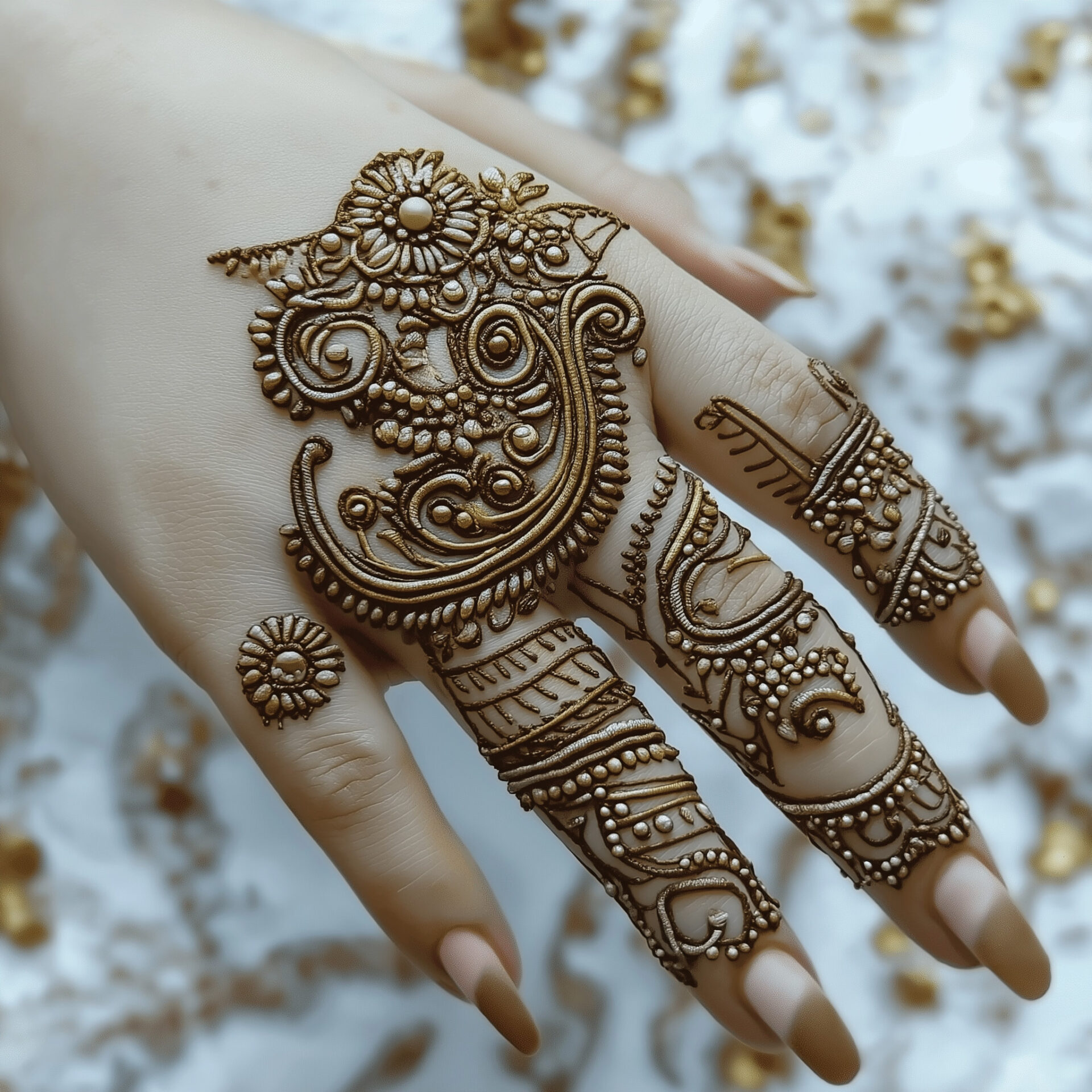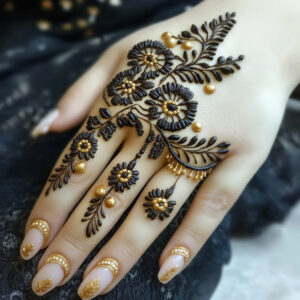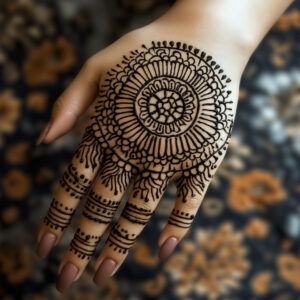Arabic Circle Mehndi Design: Finding Balance in Every Curve
In both art and life, there’s something truly captivating about the circle. It represents wholeness, unity, and continuity—concepts that resonate deeply with me not only as a chef but also as someone who appreciates the subtleties of form and design. The Arabic Circle Mehndi design embraces this same concept of balance and elegance. Much like in cooking, where each ingredient has its place, these circular designs have a harmony that brings together the past and the present, tradition and modernity.
As someone who constantly experiments with flavors, I find a parallel between the circular patterns in Mehndi and the balance of flavors in a dish. Each swirl and curve in a Mehndi design has a purpose, just as each ingredient in a recipe plays a specific role. Whether it’s a mandala-like circle on the palm or smaller concentric circles decorating the fingers, the circular motif in Arabic Mehndi creates a sense of completeness and flow.
The Symbolism of the Circle in Mehndi Art
In Arabic culture, the circle holds deep meaning. It’s a symbol of eternity, reflecting the infinite cycles of life, nature, and even time. When used in Mehndi, the circle brings with it a sense of groundedness and calm, almost like the feeling of savoring a dish that has been perfectly balanced with sweet, sour, and savory notes.
In 2023, Arabic Mehndi designs are moving toward simpler yet bolder statements, and circles are playing a key role in this transformation. The bold mandala circles often seen in central designs are now being adapted with modern twists—either used as standalone motifs or incorporated into more intricate patterns. These circles not only serve as a focal point but also guide the eye across the hand, much like how a bold spice in a dish draws your attention to the underlying flavors.
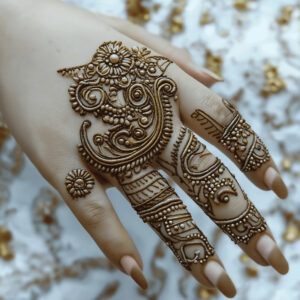

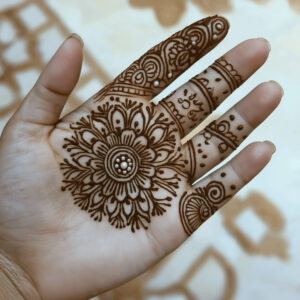
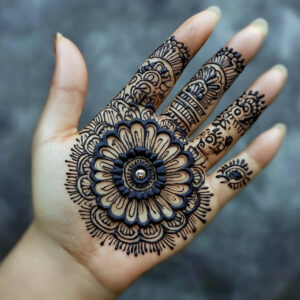
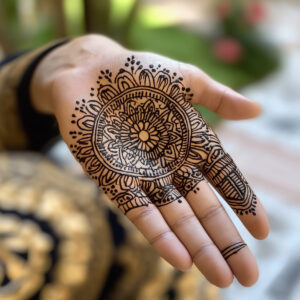
From Kitchen to Canvas: The Art of Balance
In the same way that I approach creating a dish, I see Mehndi artists working with balance. Just as a meal can’t rely on one strong flavor but needs supporting ingredients, Mehndi designs often use the circle as a base, surrounded by smaller elements—like leaves, dots, and vines—that complete the look. It’s a bit like layering flavors; the boldness of the circle is tempered by the softness of the surrounding details.
I once observed a Mehndi artist in Dubai who specialized in Arabic circle designs. Her approach reminded me of my time creating a signature dish: she began with a bold, circular motif in the center of the hand, then added finer, more delicate details around it. Each addition—whether a tiny dot or a curved vine—added a new layer to the design, much like adding a dash of spice or a hint of sweetness to balance out a dish.
What fascinated me was how the Arabic circle design created a flow that drew you in, much like how the aroma of a perfectly cooked dish entices you to take that first bite. The circular designs invite the viewer’s eye to move naturally from one point to another, creating a sense of movement and continuity that feels effortlessly elegant.

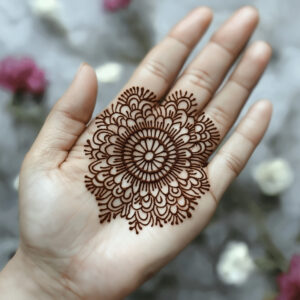
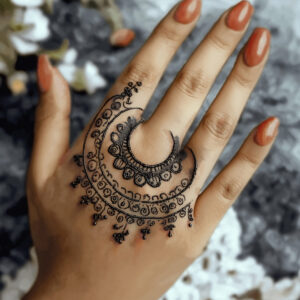
Circles in Motion: The Flow of Mehndi and Life
What I love most about the circle motif is its versatility. It can be both the centerpiece of a bold, full-hand Mehndi design, or a subtle addition to the tips of the fingers. The circle’s ability to adapt reminds me of the way I approach cooking—whether I’m crafting a complex multi-course meal or preparing a simple, rustic dish, the key is always balance.
This idea of balance also resonates deeply with the way Mehndi designs move with the hand. As I observed the Mehndi artist in Dubai, I noticed how the circular designs seemed to come to life with every movement of the hand. The large circles on the palm or wrist became dynamic, changing with the angle of the hand and the light. It was a reminder that art, like food, isn’t static—it’s meant to be experienced, to move with life, and to evolve with every moment.
In 2023, the trend of Arabic circle Mehndi designs is all about movement. Artists are experimenting with asymmetry by incorporating circles of different sizes, layering them in ways that create depth and texture. This trend reflects the fluidity of modern life—where tradition remains, but there’s always room for innovation.
The Circle of Life and Art
In many ways, the Arabic circle Mehndi design mirrors the journey of life. The circle represents completion and continuity, but also the idea that there’s always room to begin again. Whether in Mehndi or in the kitchen, the beauty lies in finding harmony—between bold and delicate, between the past and the future, between simplicity and complexity.
For anyone looking to embrace a Mehndi design that symbolizes unity, flow, and timeless elegance, the Arabic circle motif is a perfect choice. It’s not just about decoration—it’s a reminder that, much like in food and life, every element plays a role in creating a whole that is greater than the sum of its parts.
Keep Exploring Mehndi Art:
- Gol mehndi design front hand– Discover the elegance of Gol Mehndi designs for the front hand, where circular patterns create a stunning focal point.
- Circle Mehndi designs front hand – Explore how circular motifs on the front hand can blend tradition with modern design for a timeless look.
